Prayer, or Salah, is one of the central pillars of worship in Islam and a fundamental obligation for all Muslim boys as they mature. It serves as a direct line of communication with Allah (SWT) and plays a crucial role in maintaining one’s spiritual health. In this Namaz (Salah) Guide for Boys, we’ll take you step-by-step through the process of performing Salah, highlighting its importance while explaining each posture, recitation, and action specifically for boys and young men.
Learn the fundamentals of Islam with our online Islamic Studies course.Sign up now!
Importance of Namaz in Islam
Salah, also known as Namaz, is the second pillar of Islam and plays a vital role in the life of every Muslim. It’s a way to express devotion, gratitude, and complete submission to Allah, the Almighty. By performing Salah regularly, Muslims cultivate discipline, mindfulness, and a strong bond with the broader Islamic community.
Salah is observed five times a day, and each prayer involves specific verses and physical actions, like bowing and prostrating, all of which carry profound spiritual significance.
When is Salah Obligatory for Boys?
Boys are encouraged to begin learning and practicing Salah as early as age 7 or 10, helping them develop strong spiritual habits and a meaningful connection with their faith. This guidance is rooted in the teachings of Prophet Muhammad (peace be upon him), who said:
“Teach your child to pray when they reach the age of seven, and discipline them for not observing it by the age of ten” (at-Tirmidhi No. 407).
Praying at the prescribed times with the right intention (Niyyah) is a clear sign of obedience to Allah (SWT) and dedication to following His commandments.
The Five Daily Prayers
Muslim boys must understand the timing and names of the five obligatory daily prayers:
- Fajr: Performed at dawn, before sunrise.
- Dhuhr: Midday prayer, after the sun has passed its zenith.
- Asr: Late afternoon prayer, before sunset.
- Maghrib: Performed just after sunset.
- Isha: Night prayer, performed after twilight has disappeared.
Each of these prayers has a designated time frame, and missing any prayer without a valid reason is considered sinful. Boys are taught the value of punctuality and respect for time by adhering to the prayer schedule.
Wudu (Ablution)
Performing Wudu is mandatory before Salah. Wudu purifies the body and prepares you to stand before Allah. Here’s how to perform Wudu:
- Wash your hands up to the wrists three times.
- Rinse your mouth three times.
- Wash your nostrils by inhaling water and then exhaling it.
- Wash your face thoroughly three times.
- Wash your arms up to the elbows three times, starting with the right arm.
- Wipe your head, including your ears, once.
- Wash your feet up to the ankles three times, starting with the right foot.

It’s important to ensure that Wudu is done correctly before each Salah. Without proper Wudu, Salah is invalid.
How to Perform Salah: Step-by-Step Guide for Boys
1. Making the Intention (Niyyah)
Before starting Salah, it is essential to make an intention, or Niyyah, in the heart. The intention should be clear: you are offering Salah solely for the sake of Allah (SWT). There is no need to verbalize the intention; it is purely in the heart.
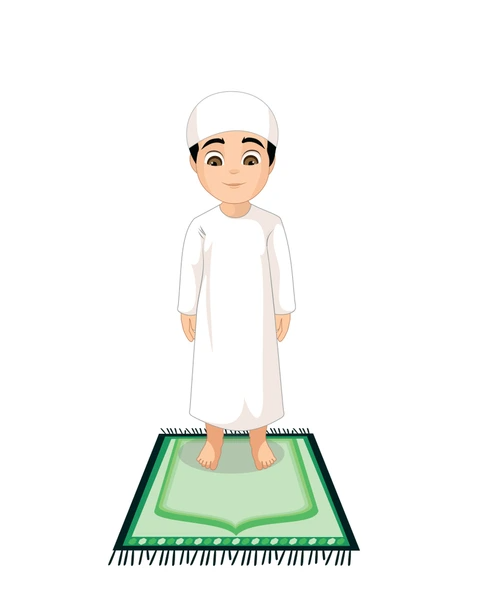
2. Facing the Qibla
When performing Salah, it is obligatory to face the Qibla, the direction of the Kaaba in Mecca. For boys, learning how to find the Qibla is essential, and today, tools like compasses or smartphone apps can help determine the right direction.
3. The Takbir (Starting Salah)
The Salah begins with Takbir. Raise your hands up to your ears (boys can raise their hands slightly above their shoulders) and say “Allahu Akbar” (Allah is the Greatest). This marks the beginning of your prayer.
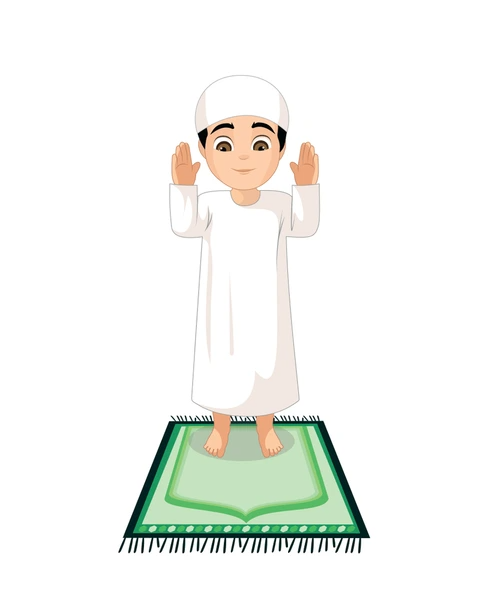
4. Reciting Surah Al-Fatiha
After Takbir, place your right hand over your left hand on your chest. You should now recite Surah Al-Fatiha, the opening chapter of the Quran:
“Bismillah-ir-Rahman-ir-Raheem, Alhamdu lillahi rabbil ‘alamin, Ar-Rahman-ir-Raheem, Maliki yawmi-d-Deen. Iyyaka na’budu wa iyyaka nasta’een, Ihdinas-sirat al-mustaqeem, Sirat alladhina an’amta ‘alayhim ghayril maghdubi ‘alayhim walad-dallin.”
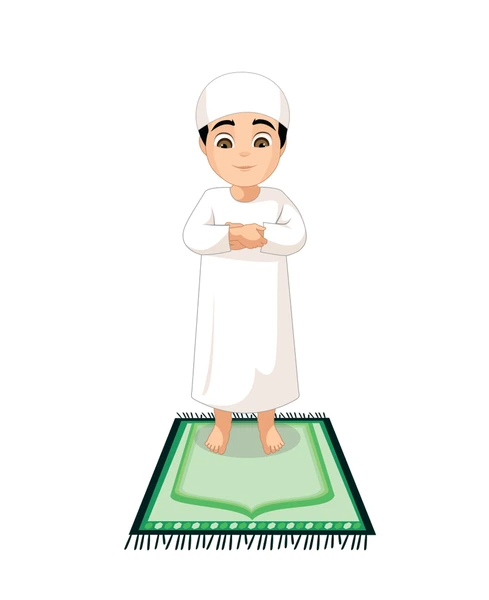
This chapter is recited in every unit (rak’ah) of Salah, followed by any other short Surah or verses from the Quran.
5. Ruku (Bowing)
After reciting a short Surah, move into the Ruku (bowing position). Keep your back straight, place your hands on your knees, and say “Subhana Rabbiyal Azeem” three times, which means “Glory be to my Lord, the Most Great.”
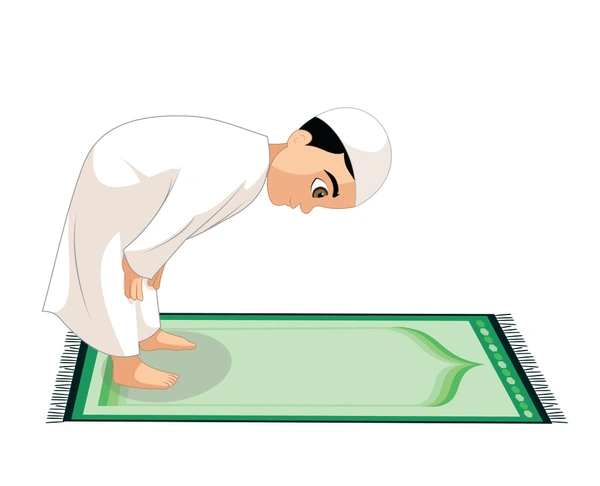
6. Standing Back Up
After Ruku, stand up straight and recite: “Sami’ Allahu liman hamidah” (Allah hears the one who praises Him), followed by “Rabbana wa lakal-hamd” (Our Lord, to You is all praise).
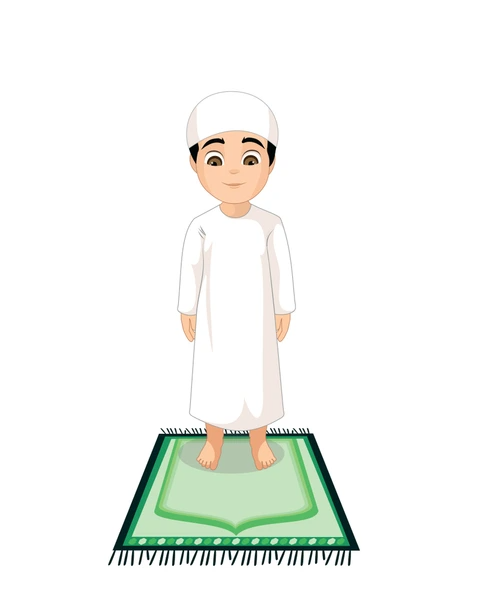
7. Sujood (Prostration)
The next step is Sujood (prostration). Lower yourself to the ground, with your forehead, nose, hands, knees, and toes touching the ground, and say “Subhana Rabbiyal A’la” three times, meaning “Glory be to my Lord, the Most High.”
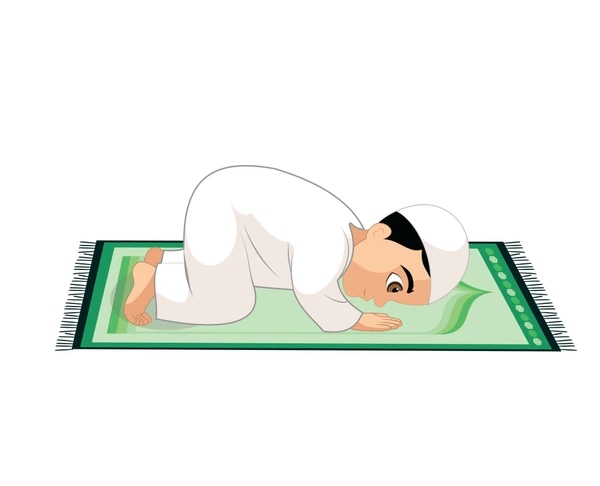
8. Sitting Between the Two Sujood
After Sujood, sit back on your heels and recite: “Rabbighfir li warhamni” (O my Lord, forgive me and have mercy on me).
9. Second Sujood
Perform a second Sujood, just like the first one, and then move back to the standing position. This completes one rak’ah (unit) of Salah.
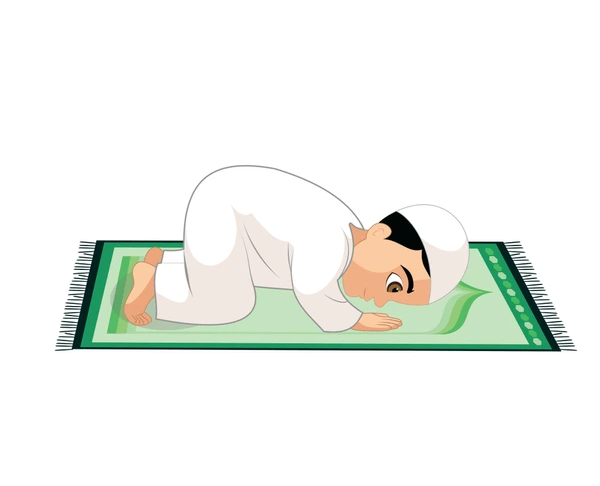
10. Perform the Tashahhud at the End of Every Two Rak’ah
After two sujud, sit on your legs and knees, raise your right index finger, and say:
At Tahiyyaatu lilaahi was Salawaatu wat tayibaatu Assalaamu ‘alaika ayyuhan nabiyyu wa rahmatu Allahi wa barakaatuh. Assalaamu ‘alaynaa wa ‘alaa ‘ebaadillaahis saaliheen, Ash hadu allaa ilaha illa Allah Wa ash hadu anna Muhammadan ‘abduhuu wa rasuuluh.
11 Additional Tashahhud for the Final Rak’ah
If this is the final rak’ah in the prayer, add the following (Durood-e-Ibrahimi) to the Tashahhud:
“Allahumma salli ‘ala Muhammadin wa ‘ala aali Muhammad Kamaa salayta ‘ala Ibraaheem wa ‘ala aali Ibrahim Innaka Hameedun Majeed Wa baarik ‘ala Muhammadin wa ‘ala aali Muhammad Kamaa baarakta ‘ala Ibraaheem wa ‘ala aali Ibrahim Innaka Hameedun Majeed.”
12. Concluding the Salah – The Tasleem
After completing your Salah, whether it is 2 rak’ahs Fajr, 4 rak’ahs Dhuhr, or 3 rak’ahs Maghrib, you must end the prayer with the Tasleem. The Tasleem is performed by turning your head to the right and saying, “Assalamu alaykum wa rahmatu Allah” (PBUH), and then turning to the left and repeating, “Assalamu alaykum wa rahmatu Allah.”
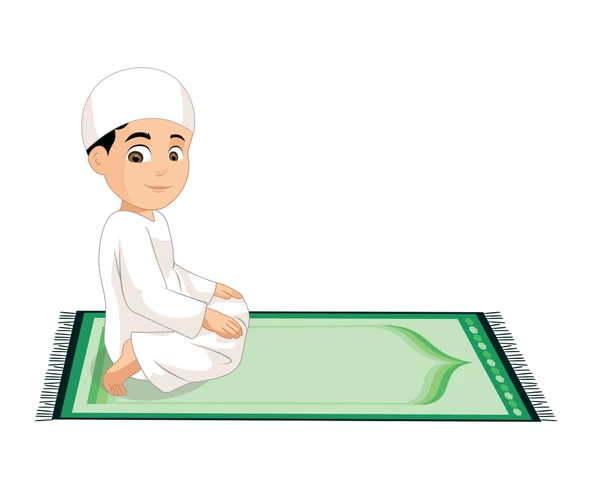
This marks the conclusion of your Namaz.
Key Tips for Boys Learning Salah
- Start Early: It’s essential for boys to start learning Salah at a young age to develop consistency and understand its importance.
- Practice Recitations: Regularly practice the verses of the Holy Quran and Duas recited during Salah to improve pronunciation and fluency.
- Correct Posture: Ensure that the postures in Salah, such as bowing and prostrating, are done correctly to maintain the validity of the prayer.
- Understand the Meaning: Boys should take the time to learn the meaning of the recitations so they can pray with more focus and understanding.
- Pray in Congregation: Whenever possible, boys should pray in a mosque or with their family, as the rewards for congregational prayers are greater.
Conclusion
Learning and performing namaz (Salah) is a critical aspect of a young Muslim boy’s life. By understanding the steps and significance of each part of Salah, boys can develop a strong bond with their faith and grow spiritually. We hope this guide provides a clear and comprehensive roadmap to help boys perform Salah properly and consistently.
Learn Quran and Islamic studies online with our Quran academy.
Join us for a one week free trial!


